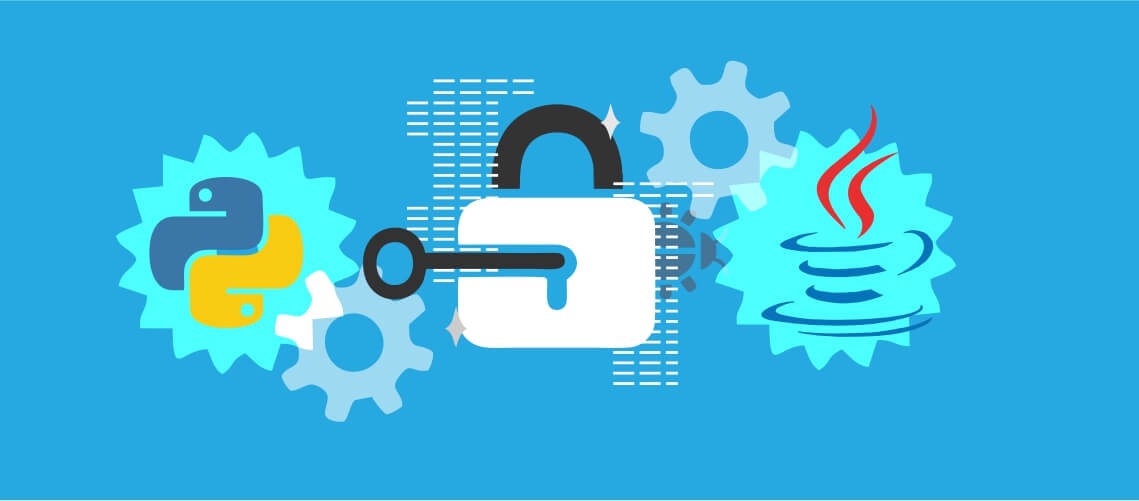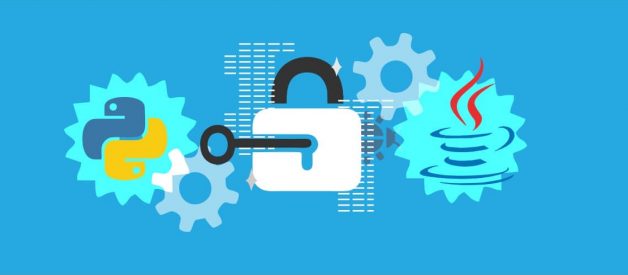
Both Python and Java are widely used general purpose programming language. According to the latest TIOBE Programming Community Index, Java is more popular than Python. At present, developers use Java and Python for developing a wide variety of desktop applications and web applications. Both programming languages are also used widely for machine learning and data science.
But Java, unlike Python, is one of the two official programming languages for Android. Java was designed with the goal to enable developers to build software applications with minimal implementation dependencies, where Python is the only programming language whose design philosophy emphasizes on code readability. Hence, it becomes essential for programmers to understand the key differences between Python and Java.
Comparing Top Two Programming Languages of 2018: Python vs. Java
Type of Programming Language
Both Python and Java are high-level programming languages. But Python is an interpreted programming language. The developers have to use operating system specific Python interpreters to execute the Python code directly. They even have option to choose from several implementations of the programming language. On the other hand, Java is a compiled programming language. The Java code is initially compiled into bytecode that runs on any device or platform with Java Virtual Machine. The developers can further port the compiled Java code from one platform to another seamlessly.
Programming Paradigm Support
Each of the two programming languages supports a number of commonly used programming paradigms. In addition to being an object oriented programming language, Python also supports functional, imperative, and procedural programming paradigms. Java was originally developers as an object oriented, concurrent, and class-based programming language. But it has been evolving consistently. Java 8 treats functions as the first class citizens, while supporting key functional programming concepts like lambda expressions.
Code Readability
Unlike Java, Python emphasizes explicitly on code readability. It even enables programmers to keep the code base clean, readable, and concise. Many developers prefer Python to other programming languages to avoid writing additional code and keep applications maintainable. Each new version of Java comes with a number of new language features to simplify software development. Java 9 helps developers to accelerate software development and maintenance by structuring the software applications with modules. Each module is further designed as a reusable collection of code. But the developers have to put extra time and effort to keep the Java code organized and maintainable.
Standard Library
While writing code in Python, the programmers can take advantage of its large and comprehensive standard library. The Python libraries make it easier for programmers to write a variety of software applications and complete a number of software development tasks. The developers even have option to choose from over 130000 Python packages including graphical user interface, database, multimedia, web frameworks, testing frameworks, automation, system administration, text processing, image processing and scientific computing. At the same time, Java also allows developers to choose from a wide range of libraries according to their specific needs. The developers can even choose from core, integration, and user interface libraries. However, Python still scores over Java in the category of standard library.
Performance and Speed
Both Java and Python lack the optimal speed required to facilitate high performance computing. But Java Virtual Machine (JVM) speeds up Java code execution through just-in-time (JIT) compilation. The JIT compiler compiles the bytecode to native machine code more quickly. Also, Java makes software applications run faster by supporting concurrency. On the other hand, the developers can accelerate Python code execution through several implementations of the programming language. For instance, they can use Jython to compile the Python code into Java bytecode, and Cython to compile the Python code into C/C++ code. The multiple implementations help programmers to optimize execution speed of Python applications.
Mobile App Development
At present, Java is one of the two official programming languages for world?s most popular operating system. A large percentage of developers nowadays use Java for building apps and games for Android platform. The even have option to write Android apps and games in Java efficiently by availing a number of robust frameworks and development tools. But the developers lack any option to use Python for building native mobile apps for any mobile platforms. They can still develop Python-based cross-platform mobile apps by using libraries like Kivy. The developers have to put extra time and effort the make the Python-based apps deliver optimal user experience.
Machine Learning and Data Science
Python is used widely by enterprises for scientific computing, big data, and artificial intelligence projects. Also, it is currently most preferred programming language for machine learning and data science. A large percentage of data scientists and machine learning programmers even prefer Python to Java while working on sentiment analysis. However, many machine learning programmers opt for Java while they work on projects related to network security, cyber attack prevention, and fraud detection.
Agile and DevOps
A steady increase is being noted in the enterprises adopting agile development methodology to deliver high quality software applications rapidly. Likewise, many organizations nowadays opt for DevOps to accelerate the software development, testing, and deployment processes. Both Java and Python enables enterprises to adopt new project management methodologies like agile and DevOps. As Java features a static type system, it becomes easier for programmers to simplify refactoring. At the same time, Python helps developers to automate refactoring by featuring a dynamic type system. Also, its simple and expressive syntax rules enable Python programmers to experiment with varied ideas.
Learning Curve
As highlighted by a number of studies, beginners find it easier to learn Python to Java. The simple and expressive syntax rules of Python make it easier for beginners to start writing software applications. Also, the beginners are not required to put extra time and effort to keep codebase clean and readable. On the other hand, Java requires beginners to write additional code to express concepts and accomplish common tasks. But many beginners still opt for Java to learn a programming language that enables them to build mobile apps for Android platform.
On the whole, both Python and Java are robust programming languages. Despite being mature programming languages, they are currently being used for artificial intelligence, machine learning, and data science. Hence, it becomes essential for programmers to compare Python and Java based on specific needs of each software development project.


